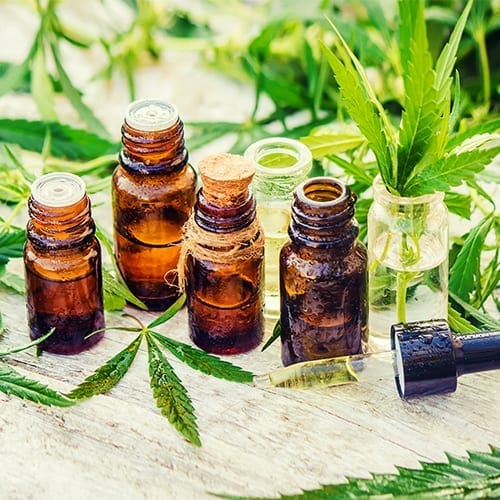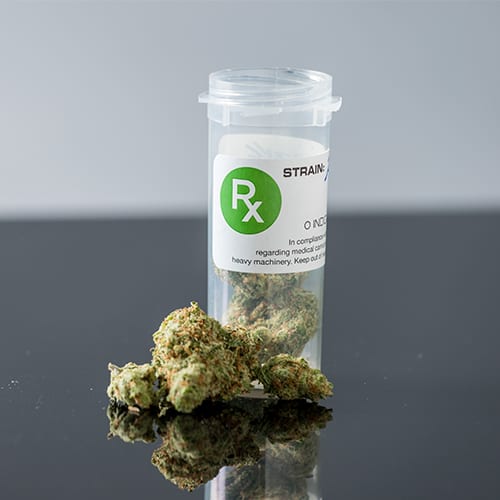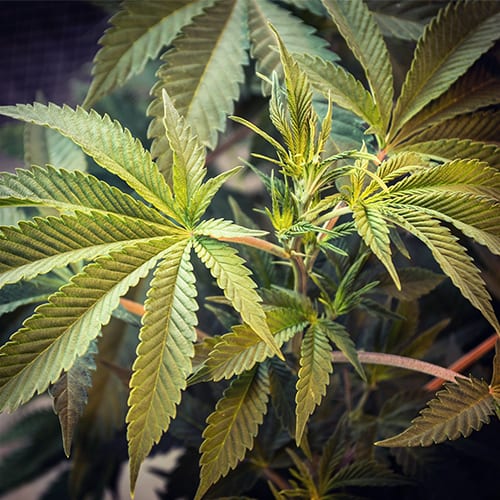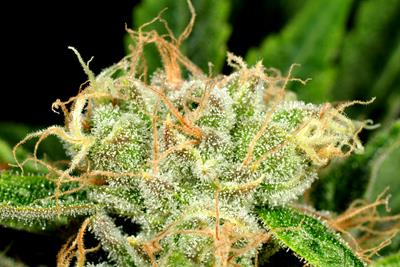
Like any plant or living thing, the science behind cannabis comes with a long list of terms that refer to its anatomy and components. Here are nine different terms you should familiarize yourself with if you’re looking to learn about this miracle plant, so take note.
Moon Rocks
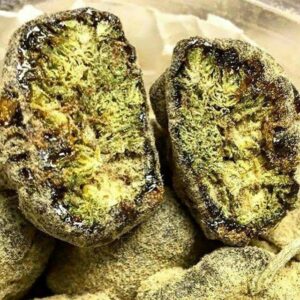
Moon rock nugs are dipped in CO2 hash oil and then coated in kief to combine three different forms of cannabis into one. They’re incredibly potent and pretty great to show off to your friends. To make, simply break off smaller pieces of flower (the smaller the better and easier to work with), then drizzle hash oil over the bud so it’s evenly covered. Next, grab a pair of tweezers and gently toss the bud in kief powder to coat evenly. Let it dry, then consume! Keep in mind that these are not the type of buds that you should throw in a grinder, because doing so would lose a lot of the kief and cause the nugs to stick to the chamber. Instead, be sure to handle with care and aim to use bigger bowls to prevent having to break up the nug.
Kief

Kief is the resin glands that contain the cannabinoids and terpenes that give cannabis its unique smell, taste, and effects. Marijuana that has the kief removed from it will still possess cannabinoids, but the glands that form on the flower are the most potent components. Kief can be collected using multi-chamber grinders or dry sift screens that are placed over large tables.
Shake

Shake is the loose bits of cannabis flowers that break off and collect at the bottom of the bag or container that it’s being held in. Although most people break their weed up anyway, the dusty underbelly of every bag is usually the least desired because it’s thought to be the least potent. However, kief is very abundant in shake and therefore, it can be perfect to add to any joint or blunt.
Popcorn Buds

Popcorn buds are nugs that tend to come from the bottom of the plant and resemble the size of a piece of popcorn. Typically the top of the plant has the larger buds with more THC content, while the bottom hasn’t had as much time to grow. These buds are not highly desirable because of this fact, although many dispensaries will sell still it, so always check before you buy!
Apical Bud

The apical bud is the top part of cannabis flowers that sometimes gets chopped off during the growing process. Also known as the cola, this is the primary growing point on the plant and often is the largest flowering bud on the plant. Growers often aim to increase the number of apical buds on the plant to increase overall yield from the plant.
Pistils

Pistils are a crucial part of a female plant’s anatomy. In terms of cannabis, pistils are the little hairs on buds that span a variety of colors from white, red, orange and brown. For plants that are fertilized, the pistil collects the male pollen. However in cases like cannabis, unfertilized plants are indicators of how ripe the plant is.
Sinsemilla

Sinsemilla simply means seedless marijuana and is obtained by only allowing the female plants to blossom. Since there is no pollen from a male plant to fertilize the female, it produces no seeds and instead forms large flowers. The word comes from the Spanish phrase “sin semilla,” which means “without seeds”.
Terpene

Terpenes are unstable compounds that are produced by a variety of plants and some insects. Plants that produce terpenes have smells and flavors that are pleasing to our noses. Aromatic herbs possessing these compounds are used across the world for cooking, perfumes and medicine. There are 120 different terpenes that help dictate the taste and scent of the hundreds of different cannabis strains in cultivation.
Terpenoids

Terpenoids are terpenes that have been denatured by the drying and curing of flowers. Cannabinoids like THC-A, CBN, and CBD are classified as terpenoids that control the effects felt from cannabis. Terpenoids are contained under the umbrella of terpenes, and therefore can also be referenced as such.
SOURCE: POTGUIDE.COM


